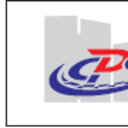[Aromatic constituents of Heteroplexis micocephal and their bioactivities].
Ključne riječi
Sažetak
OBJECTIVE
To investigate the chemical constituents of Heteroplexis micocephal and their bioactivities.
METHODS
The constituents were isolated by using a combination of various chromatographic techniques including column chromatography over macroporous adsorbent resin, silica gel, Pharmadex LH-20, and C-18, as well as reversed-phase HPLC. Structures of the isolates were identified by spectroscopic data analysis. In vitro cytotoxic, HIV-1 replication, neuroprotective, and anti-inflammatory activities were screened by using cell-based models.
RESULTS
Thirty-one compounds were obtained. Twelve of them are phenylpropanols, and the structures were elucidated as (+)-(7S,8R)-guaiacylglycerol (1), ferulic acid (2), cinnamate methyl ester (3), 1-eicosanyl 3,4-dihydroxycinnamate (4), morinin B (5), sinapyl diangelate (6), chlorogenic acid (7), 4-O-caffeoylquinic acid (8), 5-O-caffeoylquinic acid (9), 5-O-caffeoylquinic acid methyl ester (10), 1,5-di-O-caffeoylquinic acid (11) and 4,5-di-O-caffeoylquinic acid methyl ester (12). Three lignans, (+)-pinoresinol (13), prinsepiol (14) and (+)-pinoresinol-O-beta-D-glucopyranoside (15). Four acetophenones, 2,4-diacetylanisole (16), espeleton (17), viscidone (18) and 12-hydroxytremetone-12-O-beta-D-glucopyranoside (19). Nine flavones, isosakuranetin (20), hesperetin (21), 3-methoxy-5,7,3',4'-tetrahydroxyflavone (22), acacetin (23), 5-hydroxy-7,4'- dimethoxyflavone (24), 7-methoxy-4',5, 6-trihydroxyflavone (25), 3,3'-dimethylquercetin (26), kaempferol 3-O-rutinoside (27), rutin (28). And three coumarins scopoletin (29), umbelliferone (30) and ayapin (31). Compound 6 and 22 showed selective cytotoxicities against a human stomach cancer cell line(BGC-823) and a human lung cancer cell line (A549) with IC50 values of 3.74 x 10(-5) and 7.17 x 10(-5) mol L(-1), respectively. In addition, Compound 6 showed a potent activity inhibiting HIV-1 replication with an IC50 value of 4.04 x 10(-6) mol L(-1), while 22 showed neuroprotective activity Against the MPP+ induced PC12-syn cell damage, with a relative protection ratio of 105.2% (P < 0.01) at a concentration of 10(-5) mol L(-1). Compound 26 and 31 showed inhibitory activities against the release of beta-glucuronidase of the polymorphous nuclear leukocytes induced by platelet activating factor (PAF), with inhibitory rates of 75.6% (P < 0.001) and 53. 9% (P < 0.01), respectively.
CONCLUSIONS
Compounds 1-31 were obtained from the genus Heteroplexis for the first time. Compound 6 and 22 possessed selective cytotoxicities against human cancer cell lines BGC-823 and A549, respectively. In addition, Compound 6 showed a potent activity inhibiting HIV-1 replication while 22 showed neuroprotective activity against the MPP+ induced PC12-syn cell damage. Compound 26 and 31 were potent anti-inflammatory agents.





